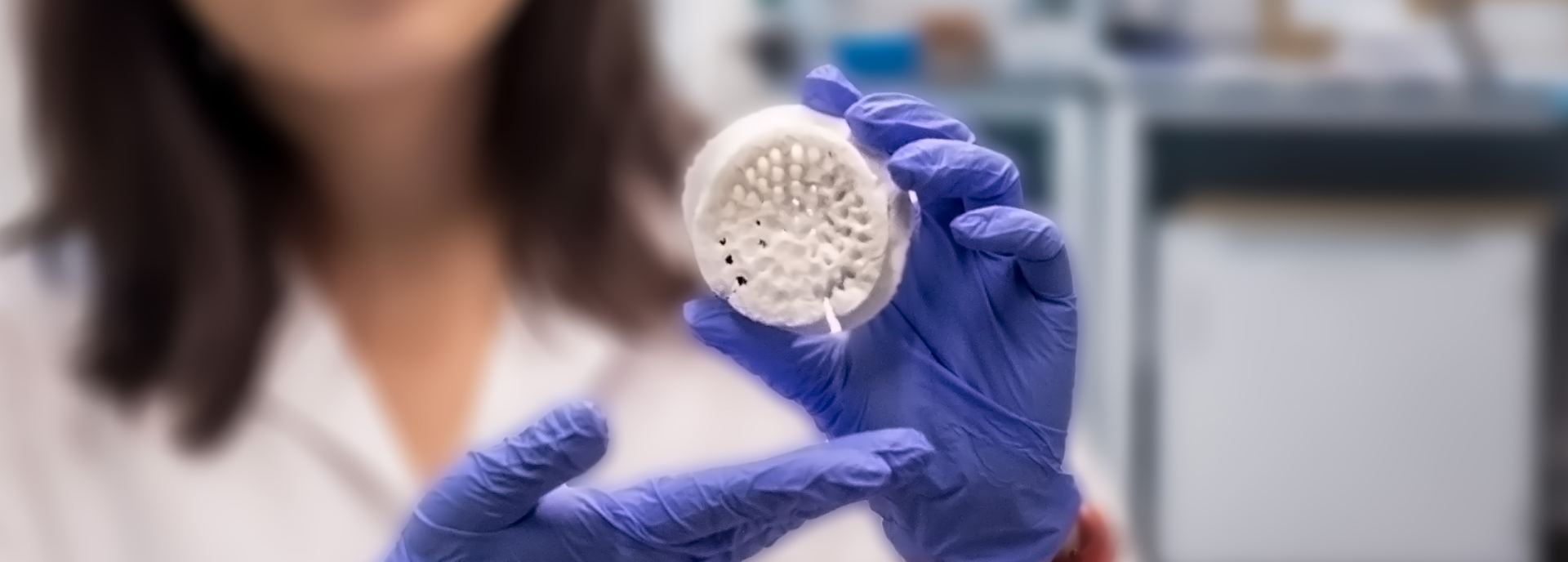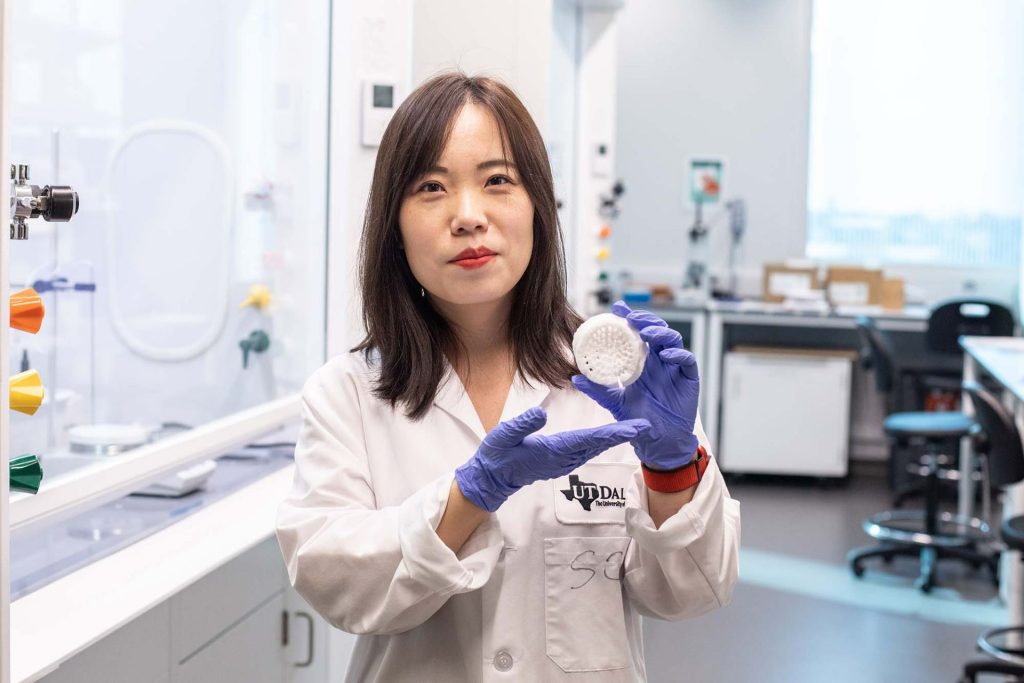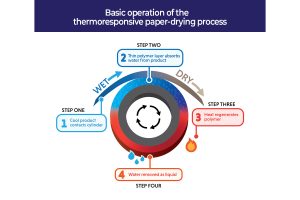
Mechanical Engineer Aims to Make Paper Manufacturing More Efficient
The effort is part of a $57.9 million investment by
the Department of Energy
A University of Texas at Dallas researcher is developing a new method to dry paper in manufacturing that uses up to 60% less energy than the traditional method in which a pulp-and-water mixture is flattened and then heated to evaporate the liquid. Dr. Shuang (Cynthia) Cui, supported by a U.S. Department of Energy (DOE) grant, is perfecting a drying process that absorbs and then releases the water as a liquid.

Cui, assistant professor of mechanical engineering in the Erik Jonsson School of Engineering and Computer Science, received the $2.3 million, three-year grant to develop the technology, which is based on thermoresponsive hydrogels — polymers that repeatedly absorb and release water, depending on the temperature. The grant is part of a $57.9 million investment by the DOE in research nationwide to help decarbonize the U.S. industrial sector, advance clean energy manufacturing and improve the nation’s economic competitiveness.
“Developing the polymer involves investigation of chemical compositions and structures in a precise manner. We have a recipe to fabricate the polymer, similar to cooking,” Cui said. “We mix the ingredients together at tightly controlled conditions including temperature and stirring speed.”

Cui’s research is aimed at customizing the polymer to coat cylinders used in the manufacture of sheets of paper. When a wet sheet of paper rolls over the top of the cylinder, the polymer coating absorbs the water. As the cylinder rotates, the polymer coating, wet from soaking up the water, dries as it moves through heated air by releasing the water in liquid. Then, the dried polymer coating is ready to dry additional sheets of paper, for a continuous cycle.
“Because it requires less heat to remove the water from paper as water than it does to remove it by evaporation, less energy will be used in a continuous drying process”, Cui said. The technology also could be applied to other manufacturing processes that remove water from materials, including food products and textiles.
“Developing the polymer involves investigation of chemical compositions and structures in a precise manner. We have a recipe to fabricate the polymer, similar to cooking. We mix the ingredients together at tightly controlled conditions including temperature and stirring speed.”
Shuang (Cynthia) Cui
Assistant Professor of Mechanical Engineering
Collaborators on the DOE project include Dr. Hongbing Lu, UT Dallas professor of mechanical engineering and holder of the Louis Beecherl Jr. Chair, and scientists at Western Michigan University, Auburn University and the National Renewable Energy Laboratory (NREL). Before joining UT Dallas in 2021, Cui was a researcher at the NREL.
Cui began research on technology to reduce energy use in manufacturing as a doctoral student at the University of California, San Diego. In addition to forwarding the new method to dry paper during manufacturing, Cui is investigating the use of hydrogels to help control building temperatures more efficiently. The evaporation of water contained in the hydrogels results in a cooling effect for buildings that is similar to how sweat cools the body.
“We’re working on the decarbonization of buildings and industrial processing through novel material development and system design,” Cui said. “The goal is to reduce energy use and carbon footprints so we can have a more sustainable environment.”